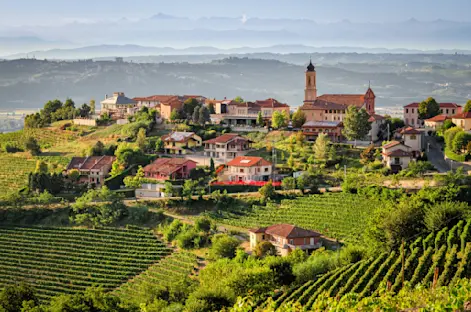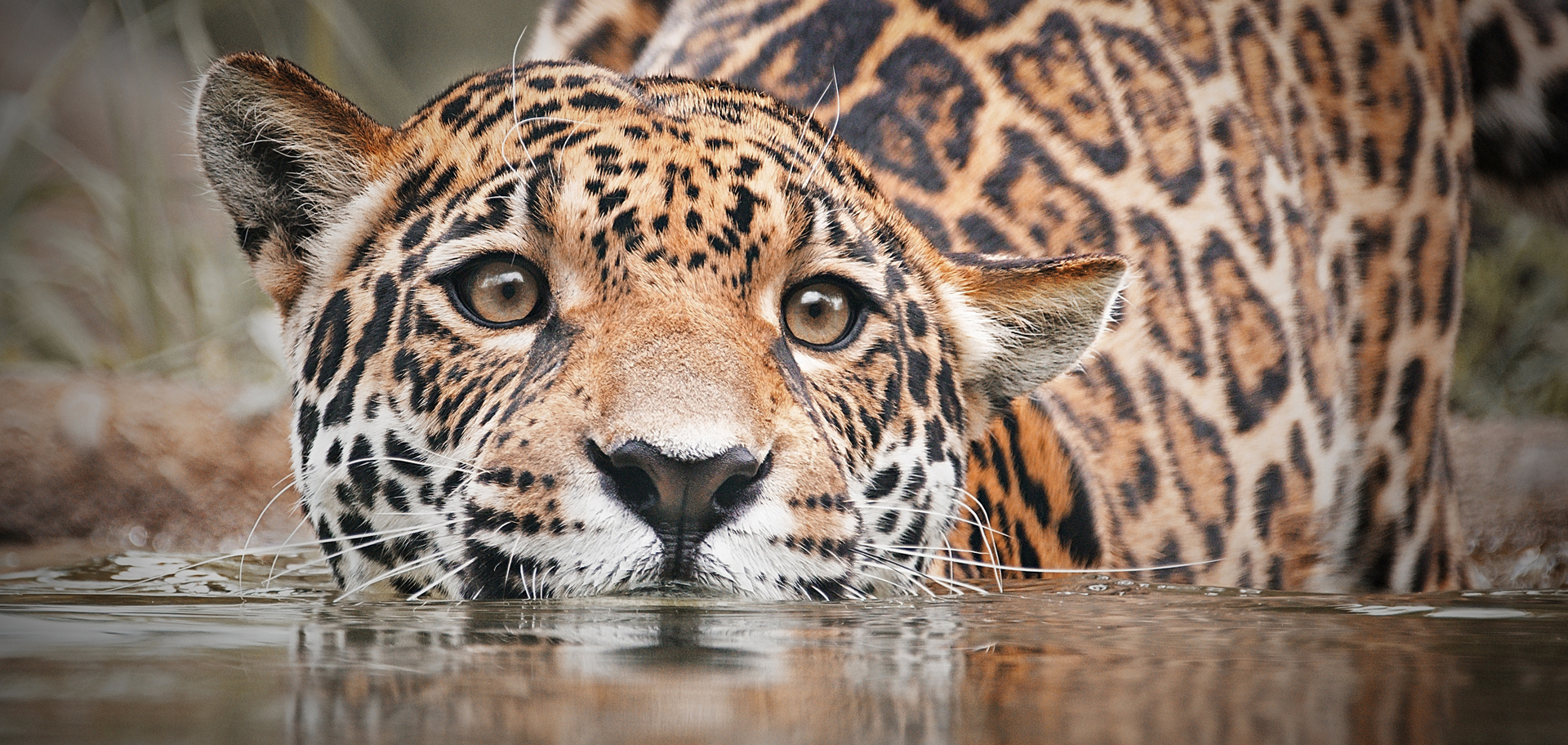
The jaguars in Brazil’s Pantanal have shown remarkable resilience following catastrophic droughts and wildfires. Not only have the big cats survived, but they’ve thrived, with more jaguars migrating in. This suggests that the Pantanal may offer a natural sanctuary for wildlife during environmental crises.
Animals and plants are remarkably resilient in the face of environmental changes. Their creative adaptations and strategies for surviving in ever-altering conditions include going dormant, developing drought tolerance, adjusting migrations, switching to nocturnal activity, forming a salinity tolerance and making social partnerships.
Now, however, we’re beginning to learn about some other astounding ways that nature is using to adapt to the rapid transformations happening in the world today. For example, fig trees in Kenya can turn parts of themselves into stone, using microbes to convert internal crystals into limestone-like deposits that lock away carbon, and still yield fruit—hinting at a delicious, new weapon in the climate-change arsenal. And after a devastating wildfire raced through Brazil’s Pantanal region, not only did the jaguar population there survive, but their numbers swelled as migrants came in seeking refuge. It’s a sign that this floodplain could serve as a natural climate sanctuary, highlighting its crucial role in a changing world.
But it’s not only the nature on land that is resilient. What’s happening below our feet and under the sea is incredible, as well. Beneath the forest floor lies an overlooked secret: many plants grow a second set of roots far deeper than expected—sometimes more than three feet down, tapping into hidden nutrient stores and potentially locking away carbon. These root systems are more common than previously believed and may play a powerful role in stabilizing ecosystems and mitigating climate change. And low-latitude orca populations that invest in high genetic diversity—despite having low population densities—are boosting their resilience and contributing to their continued adaptability and survival.
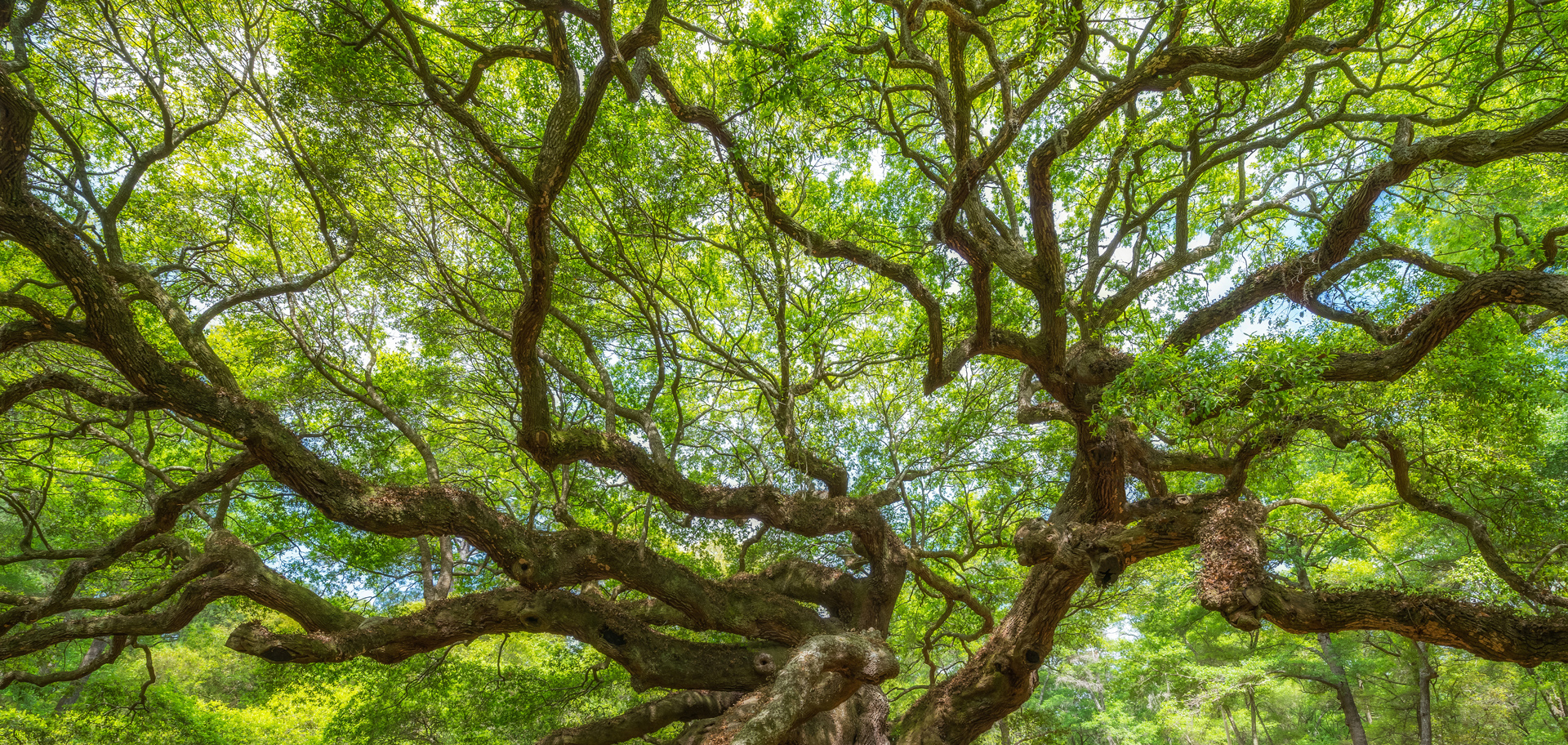
All trees use photosynthesis to turn carbon dioxide into organic carbon, which forms their branches, leaves, roots and trunks. Thus, trees act as natural carbon sinks. This carbon sequestration helps reduce the amount of greenhouse gases contributing to global warming.
From air to stone: fig trees fighting climate change
All trees use photosynthesis to turn carbon dioxide (CO2) into organic carbon, which forms their branches, leaves, roots and trunks. This is why planting trees is recognized as a way to offset CO2 emissions.
Certain trees also use CO2 to create calcium oxalate crystals. When parts of the tree decay, these crystals are converted by specialized bacteria or fungi into calcium carbonate, the same mineral as chalk or limestone. This increases the soil pH (raising the soil alkalinity) around the tree, while also increasing the availability of certain nutrients. The inorganic carbon in calcium carbonate typically has a much longer lifetime in the soil than organic carbon, making it a more effective method of CO2 sequestration.
That’s why a team of Austrian, Kenyan, Swiss and United States scientists studied three species of native fig trees growing in Samburu County, Kenya. They identified how far from the trees the calcium carbonate was being formed and identified the microbial communities involved in the process. Using synchrotron analysis at the Stanford Synchrotron Radiation Lightsource, they found that calcium carbonate was being produced both on the exterior of tree trunks and farther within the trees, demonstrating that inorganic carbon is being stored more deeply inside the wood than once thought.
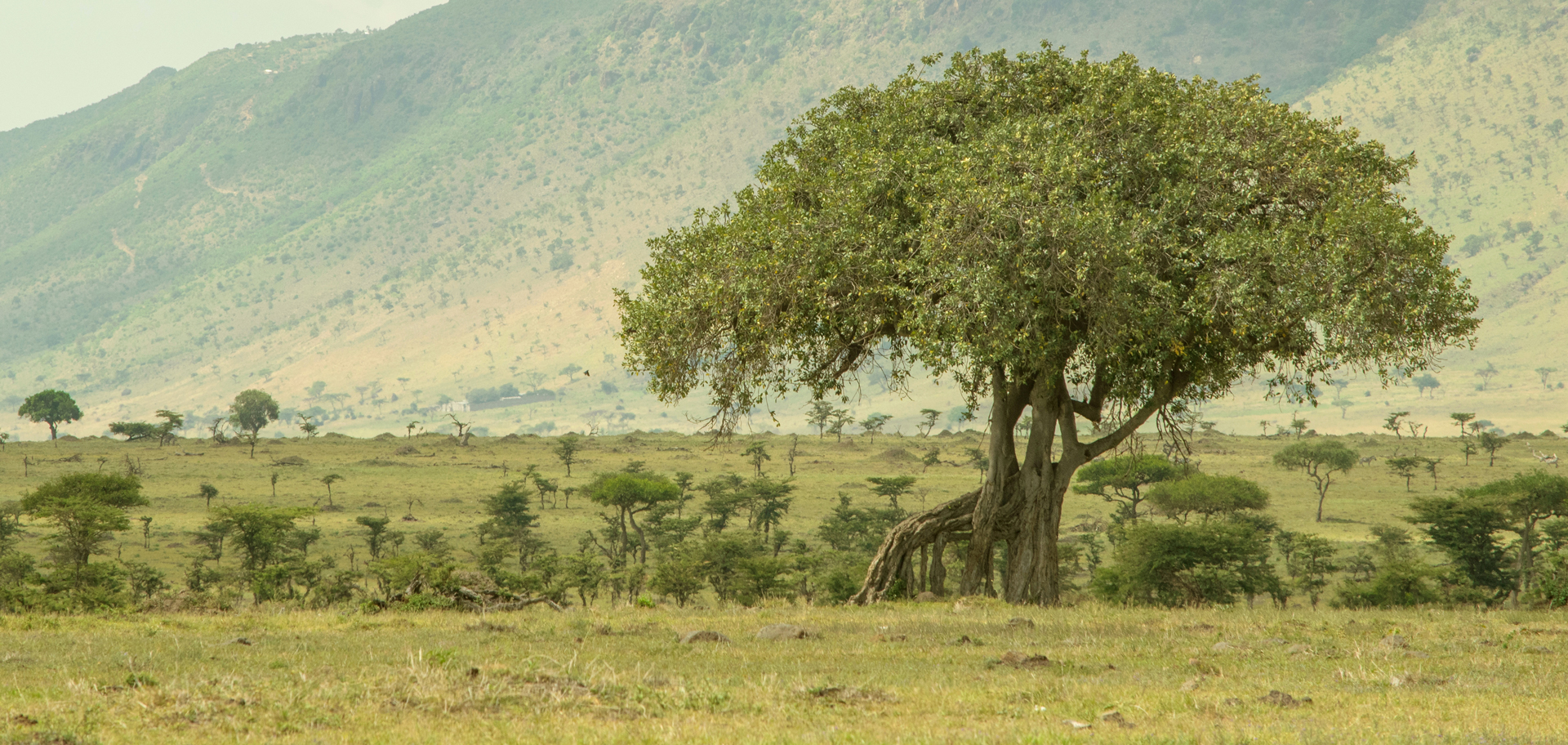
Kenyan fig trees hold significant cultural importance; some Kenyan communities revere them as sacred. The trees also have a unique ability to convert atmospheric CO2 into calcium carbonate, turning parts of themselves into stone. This makes them powerful allies in the fight against climate change.
Of the three types of fig trees studied—Ficus glumosa, Ficus natalensis and Ficus wakefieldii—the scientists found that Ficus wakefieldii was the most effective at sequestering CO2 as calcium carbonate. The research was presented at the Goldschmidt Conference, a joint congress of the European Association of Geochemistry and the U.S. Geochemical Society, that took place in Prague, Czech Republic, in July 2025. The researchers are now planning to assess Ficus wakefieldii’s suitability for agroforestry by quantifying its fruit yields and water requirements, and by doing a more detailed analysis of how much CO2 can be locked away under different conditions.
Most of the research into the oxalate-carbonate pathway has been in tropical habitats and has focused on trees that do not produce food. Ficus wakefieldii is one of the first fruit trees shown to have this ability. Scientists believe there could be many more, meaning that the oxalate-carbonate pathway could be a significant, underexplored opportunity to help mitigate CO2 emissions as we plant trees for forestry or fruit.
From flames to range: jaguars permitting immigrants
Located in the northern portion of the Brazilian Pantanal, the largest freshwater wetland in the world, is a 36,700-acre protected area that floods seasonally. The site is home to a population of jaguars that are unique because their diet primarily consists of aquatic organisms instead of land-based animals, and because they are more socially tolerant and willing to share space with other jaguars.
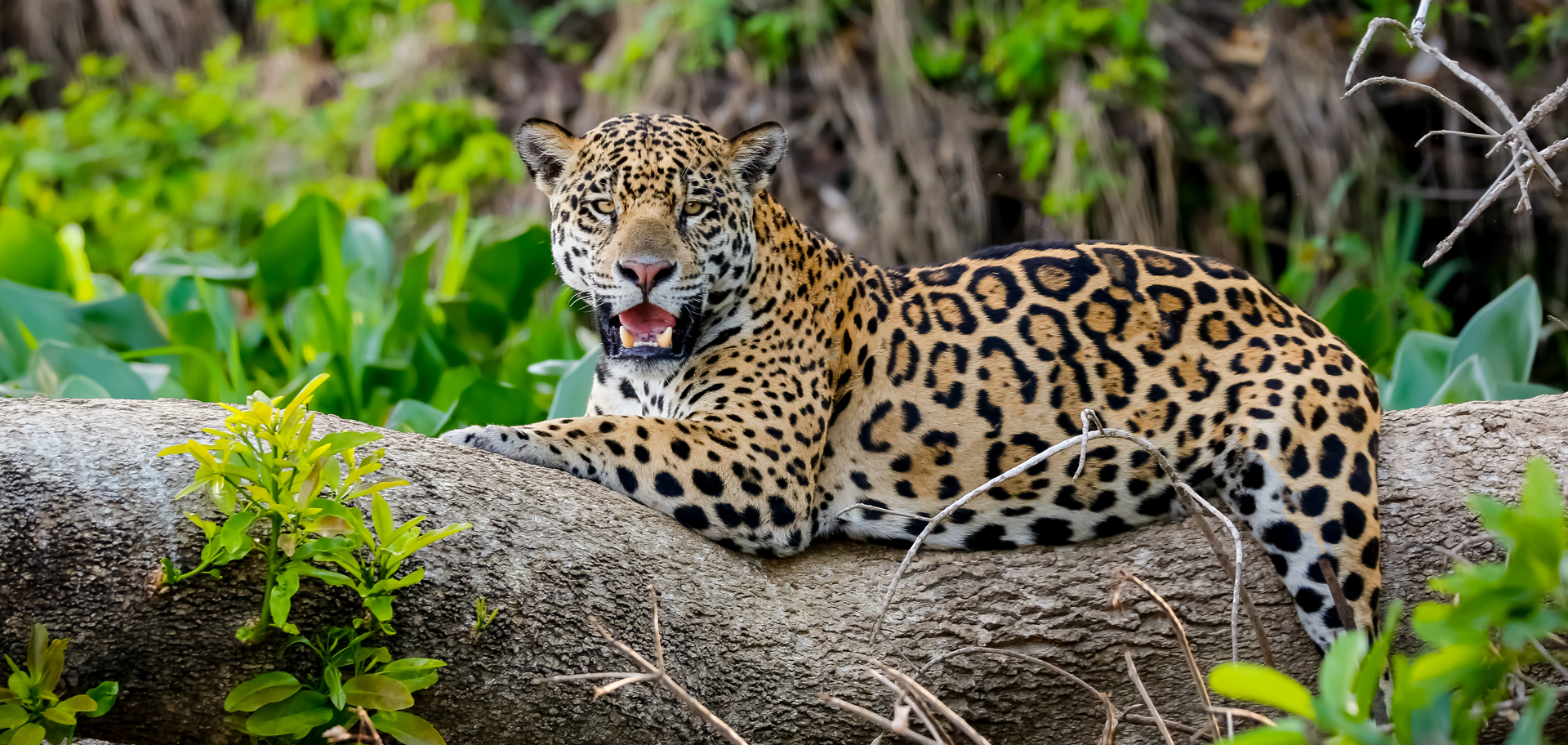
The world’s largest wetland, Brazil’s Pantanal, a UNESCO World Heritage site, is home to around 5,000 jaguars and is the best place on Earth to see the elusive cats in the wild.
In 2020, a wildfire—driven by extreme drought, extreme temperatures and human activities—burned more than 11 million acres, including half of the protected area, and caused an estimated loss of 17 million vertebrates. Researchers from Oregon State University set out to understand the short-term impacts of the fire and the long-term effects of the drought on the population of jaguars and other mammals, and whether the changes were driven by drought, fire or both.
The protected area is five hours from the nearest town, and people can access it only via boat. There are no roads, settlements or trails nearby. Scientists have studied the jaguars here since 2014. For the new Oregon State University study, videos of jaguars and other mammals taken by field cameras before and after the wildfire were used, along with nearly 175 jaguar scats collected at visits to the site in 2018 and 2021 for diet analyses.
Jaguars were the most frequently detected mammals detected by the cameras, which is highly unusual for a large, solitary carnivore. It would be similar, say the scientists, to most frequently seeing a cougar or a mountain lion on cameras in North America, instead of, for example, deer.
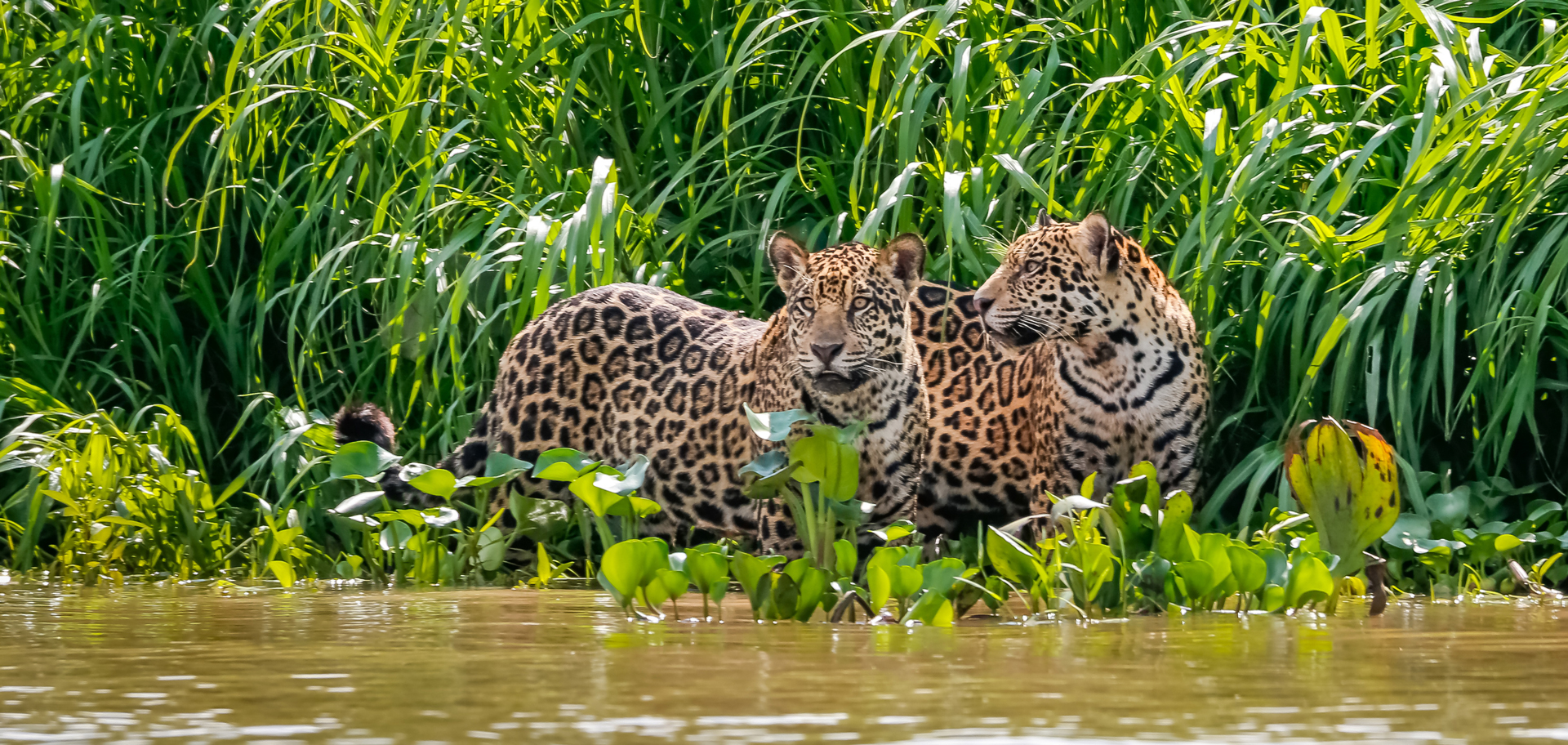
Immediately after a 2020 wildfire in Brazil’s Pantanal, jaguar activity declined. However, one year later, scientists spotted individuals at similar rates as they had before the fire, indicating that the resident jaguars persisted. In addition, jaguars from other areas arrived.
Findings from the study, published in the journal Global Change Biology in July 2025, include:
• Jaguar activity initially declined after the 2020 wildfire, indicating a short-term impact, but rebounded over time, with a significant increase in abundance and birth of cubs one year after the fire.
• Jaguars living in the area before the fire were sighted at similar rates after the fire, suggesting that resident jaguars survived it and maintained their home range; while a large number of immigrant jaguars arrived from other areas, signaling that the area served as a climate refuge.
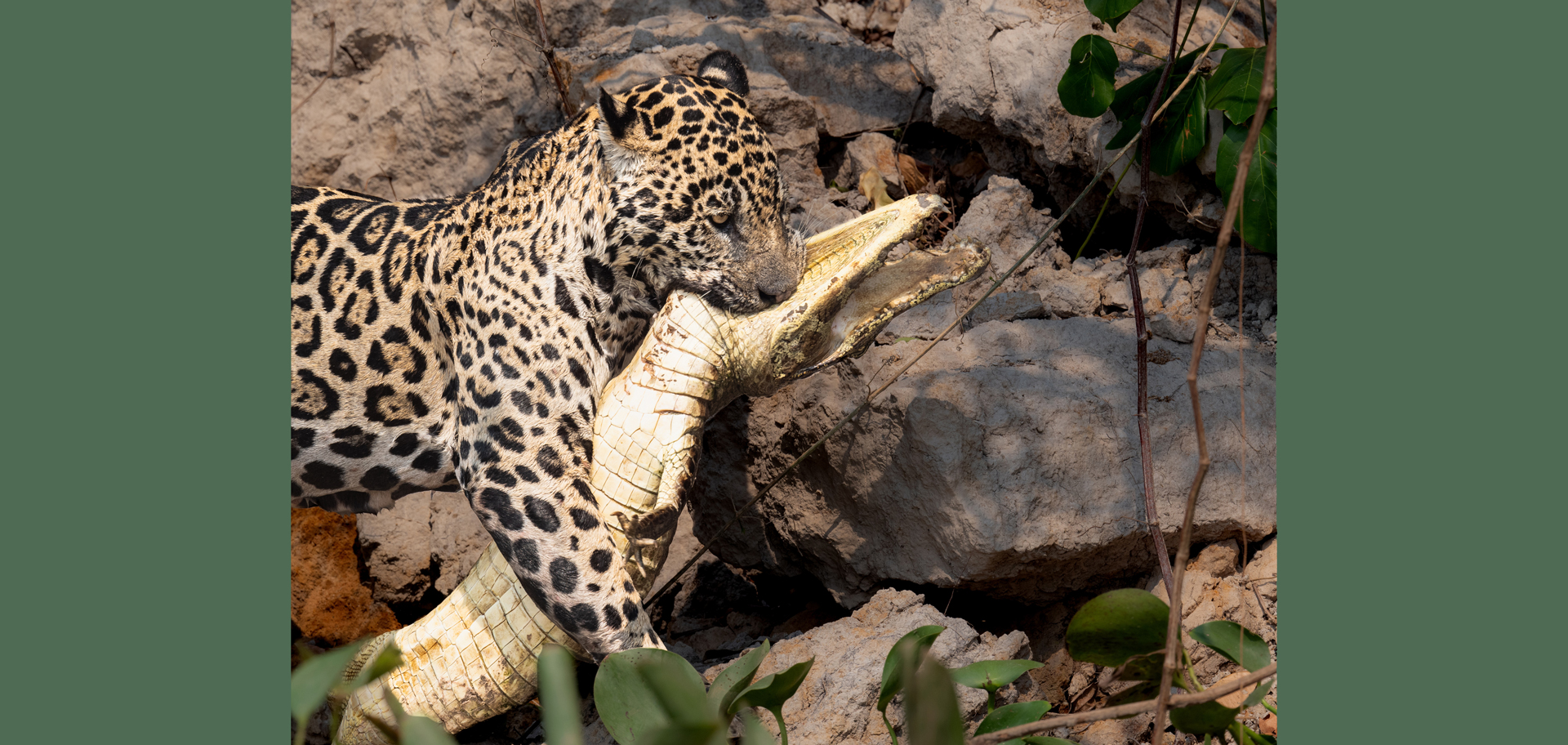
Jaguars in the Pantanal maintained their specialization on aquatic prey, particularly caiman and fish, despite the increase in mammals after the 2020 wildfire.
• Richness and abundance of other mammal species increased across the study period but were more strongly correlated with drought-induced changes than with fire-related impacts because the increase in species richness began in 2018, before the fire.
• Jaguars maintained their specialization on aquatic prey, particularly caiman and fish, despite the increase in mammals, supporting the hypothesis that consumption of aquatic prey reduces predation pressure on land-based mammals.
While the researchers caution against generalizing their findings to other areas because of the unique nature of this part of the Pantanal—including that sections of it are protected—they emphasize the importance of maintaining such refugia and implementing proactive fire management.
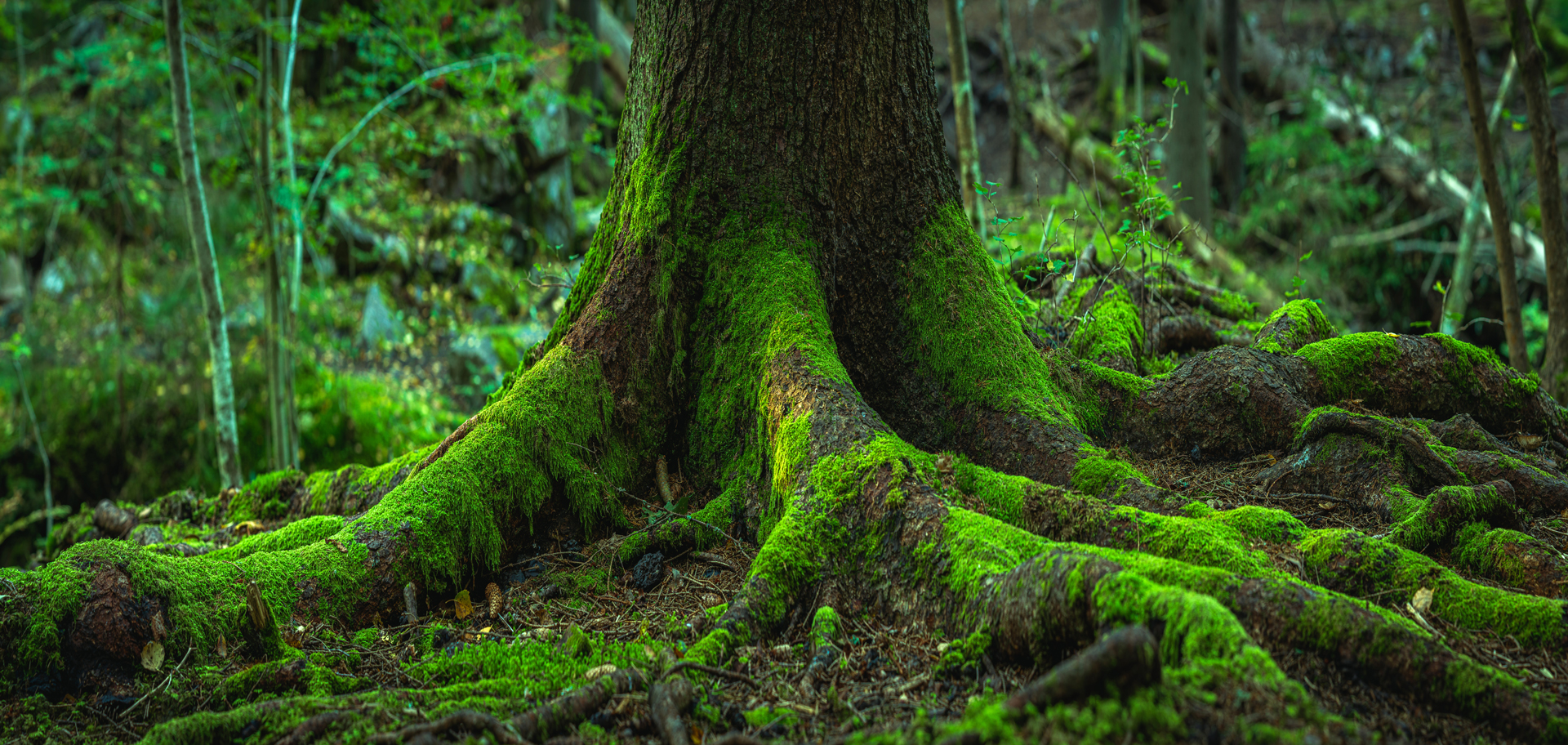
Tree roots have several crucial functions: they absorb nutrients and water from the soil, anchor the plant and store food. They also play a role in aeration, reproduction and even in symbiotic relationships with other organisms.
From barely underground to deep depths: plant roots rewriting the climate playbook
We know that trees and other plants extend their roots into the earth to draw nutrients and water from the soil; however, these roots are thought to decline as they move farther underground. But a new study, published in the journal Nature Communications in June 2025 and authored by a multi-institutional team of scientists, shows that many plants develop a second, deeper layer of roots to access additional nourishment.
The research team used data from the National Ecological Observatory Network (NEON) to examine rooting depth. The NEON database includes samples collected from soil 6.5 feet below the surface, far deeper than the one-foot depth of traditional ecological studies. This unprecedented depth allowed researchers to detect additional root patterns, spanning diverse climate zones and ecosystem types from the Alaskan tundra to Puerto Rico’s rain forests.
The scientists’ work focused on three questions, all with the aim of better understanding plants’ resource acquisition strategies and their resilience in response to environmental changes:
1) How does the abundance of roots change with depth?
2) What are the factors that impact the distribution of roots with depth?
3) Are nutrients in deeper soils equally, underexploited or overexploited by fine roots compared with surface soil?
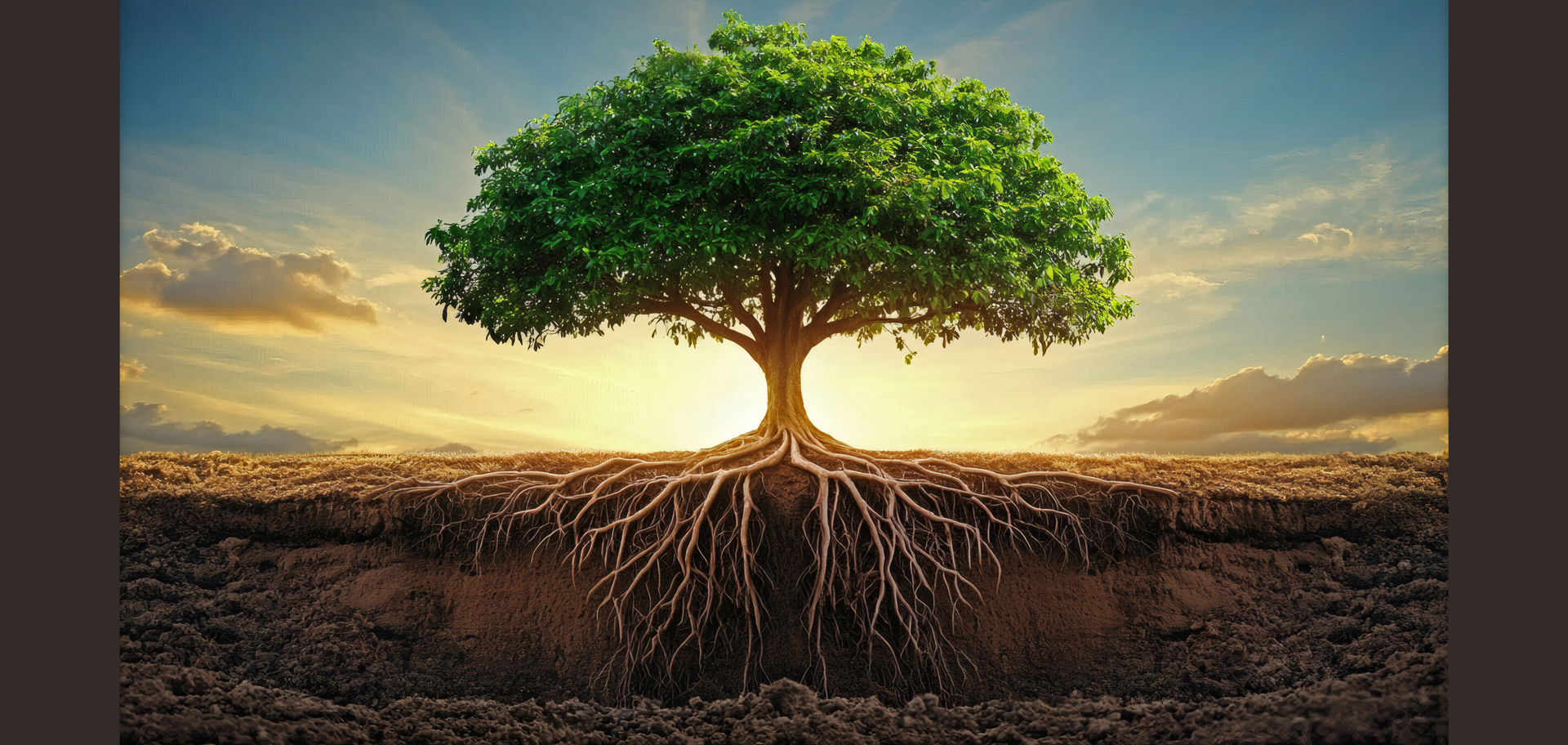
Recently, scientists uncovered a hidden network of deep roots in many ecosystems that could help mitigate climate change by storing carbon underground. These second, deeper-than-expected roots are more widespread than assumed and offer an overlooked tool in Earth’s carbon cycle.
The results of the investigation showed that nearly 20% of the studied ecosystems had roots that peaked twice across depth, a phenomenon called bimodality. In these cases, plants developed a second, deeper layer of roots, often more than three feet underground and aligning with nutrient-rich soil layers. This suggests that plants grow—in previously unknown ways—to exploit additional sustenance.
Understanding where plants grow roots is vital, as more extensive roots could mean longer-term and safer carbon storage. Harsher conditions at depth may prevent detritus-feeding microbes from releasing carbon back into the atmosphere. Unfortunately, our current ecological observations and models typically stop at shallow depths. By not looking deep enough, we may have overlooked a natural carbon storage mechanism far underground. This is certainly welcome news, especially at a time when CO2 levels are at an 800,000-year high, according to the World Meteorological Organization’s State of the Global Climate 2024 report issued in March 2025.
From inbreeding to genetic mixing: orcas mixing to maintain health
Orcas in southwest Australia thrive in a nutrient-rich environment, feeding on a diverse range of prey and forming one of the largest aggregations in the Southern Hemisphere. They calve regularly and maintain consistent body condition, painting a picture of a healthy and robust population.
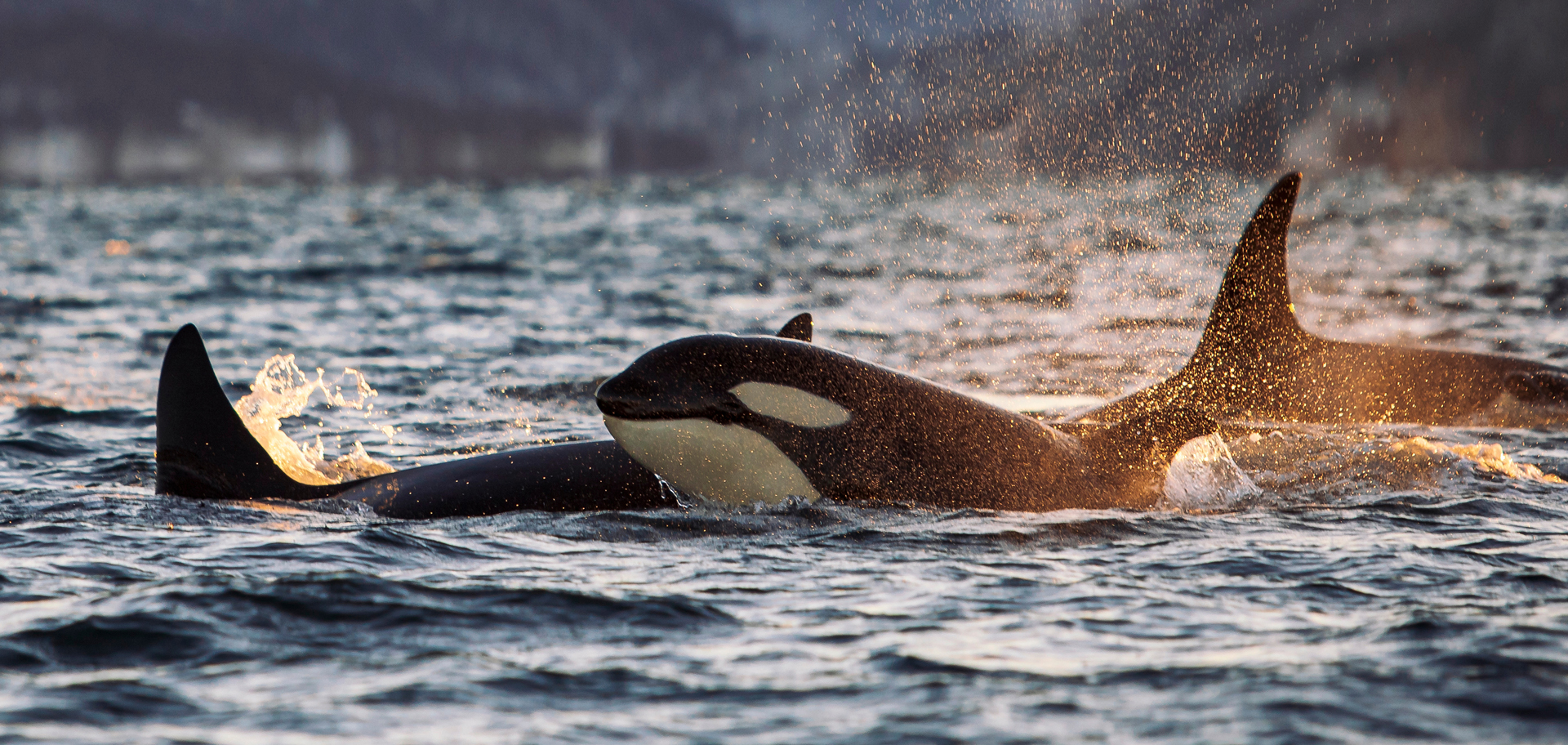
Despite their low densities, orcas in low-latitude oceans maintain exceptionally high genetic diversity. That’s because these marine mammals keep the genes flowing between geographically distant and genetically different populations.
Now, a new study from an international team of marine biologists that was published in the journal Molecular Ecology in February 2025 shows that an influx of genetic material is helping to boost the population’s genetic health, perhaps increasing their ability to cope with shifting environmental conditions.
The authors of the study state that about 20% of the genetic makeup of southwestern Australian orcas can be traced back to Antarctic ancestors, with gene flow occurring both historically and recently, in the past century. The researchers even identified the presence of great-grandparents from Antarctica. This sporadic mixing with other populations maintains long-term genetic health and survival. It reduces the effects of inbreeding; promotes a rare, natural genetic rescue effect; and increases the population’s capacity for adaptation. Such natural genetic mechanisms are crucial in an era of rapid environmental change, state the scientists.
Evolutionary-history-based studies such as this provide valuable insights into the processes that have shaped modern populations, and underscores the critical role of gene flow in enhancing genetic diversity. They also highlight the adaptive potential of populations that have the capacity to naturally evolve techniques to maintain their health, a crucial trait for survival in the face of environmental change.

Animals and plants are incredibly adaptable in the face of environmental changes. To keep up with today’s rapid transformations, they’re employing some truly astounding and never-heard-of-before strategies.
From resilience to reflection: more-than-humans enlisting innovations
The study on orcas provides rare evidence of methodologies in wild populations that promote health and resilience in the face of environmental challenges. Jaguars, too, have found ways to endure in tough times. And plants are turning themselves into stone or growing secret, second, longer roots.
While these creative strategies that the more-than-humans among us are now employing to make it through give us hope for the future, the fact that they must develop them—or fail to exist—should give us pause.
Here’s to finding your true places and natural habitats,
Candy















